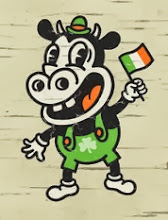My Name is Céilí.
In modern usage, a céilidh or ceilidh (English pronunciation: /'ke?l?/) is a traditional Gaelic social gathering, which usually involves playing Gaelic folk music and dancing. It originated in Ireland, but is now common throughout the Irish and Scottish diasporas
Ceili dances, or true ceili dances (fíor céili) are a popular form of folk dancing in Ireland. F Ceili dances are based on heys ("hedges" - pairs of lines facing), round dances, long dances and quadrilles, generally revived during the Gaelic revival in the first quarter of the twentieth century and codified by the Irish Dancing Commission . These thirty dances form the basis for examination of ceili dance teachers.
The style of dance employed for ceili dance differs greatly from that used for set dance, and has more the appearance associated with the style of step dance. In particular, it emphasizes height and extension, with dancers generally dancing on their toes (but not "on point" as in ballet). A movement called "side-step" or "sevens and threes" with which dancers travel sideways to the direction they are facing is common, as are jig-step movements called the "rising step" or "grinding step". Ceili dances may be divided into figures, but a single type of tune is generally used for all the figures and the dancing does not pause between the figures.
Unlike square dance and round dance, ceili dances are generally not called by a caller: the flow of dance is defined by its name.
A 10 year old Irish dancer by the name of Maeve gave me my name.
Thursday, September 8, 2011
Subscribe to:
Post Comments (Atom)



No comments:
Post a Comment